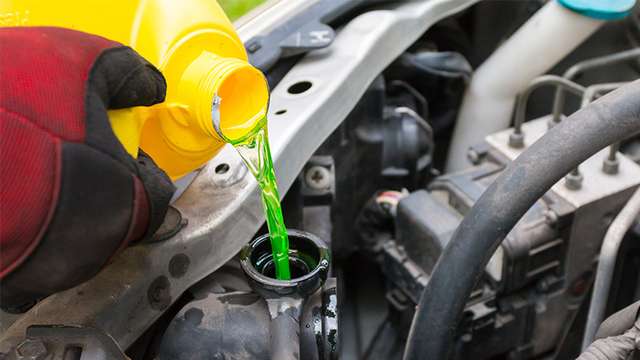- cooling
What is the difference between an air-cooled & water-cooled engine?

Updated 27 Aug 2019
Rowan Johnstone

Firstly, what is the purpose of a car’s cooling system? We’ve always heard that it’s best to wait for your car to warm up before being driven, and that reaching high RPM whilst cold could cause harm to the engine. If that’s the case, why a cooling system?
Because the engine doesn’t like excessive amounts of heat either, and an overheating engine can be damaged to the point of failure - and that ain’t a cheap fix. So, engines can’t be too cold or too hot. They need to be at a happy medium, and that all comes down to the cooling system.
When you start your car, the engine will start heating up to the optimal temperature quite quickly. When it reaches that temperature, your cooling system will kick in to make sure it doesn’t heat up any further. The energy your engine uses to create mechanical power is mostly wasted and converted into heat. The cooling system in your car needs to take care of this heat by transferring it out of the engine.
Air-cooled engines do this by incorporating a system of cooling fins around the cylinder and the cylinder head. As the car is driven, these fins draw the hot air away from the engine. Some designs have a mechanically or electrically driven fan to help increase the amount of airflow through the engine, helping to keep the engine cool.
Air-cooled engines can struggle to maintain a consistent temperature as they rely on the vehicle moving to produce their cooling. Water-cooled engines swap out cooling fins for passageways through the engine block, cylinders and cylinder head through which coolant flows. A water pump forces the coolant through the engine passageways, and a thermostat controls when the coolant is released from the engine, usually once it reaches a certain temperature.
Once the coolant is released from the engine, it flows into the radiator where the heat is extracted from the coolant and transferred out of the system via the radiators own set of cooling fins. Fans are attached to the radiator to help blow air across these fins.
Because the release of coolant is controlled by the thermostat, water-cooled engines are able to maintain a constant temperature regardless of whether the vehicle is moving. The cons of a water-cooled system is that it’s heavy and complex when compared to an air-cooled system. As a result, some manufacturers have used a hybrid that mixes components of both air-cooled and water-cooled systems.
If your car is overheating, a quality mechanic on AutoGuru will have no trouble getting you back to cooler days. Book a vehicle is overheating inspection easily online through AutoGuru!

Written By
Rowan Johnstone
On weekends you’ll probably find Rowan in the garage with his Dad restoring a 1958 Ford Star Model Customline or enjoying a cruise through the Gold Coast hinterland on his Suzuki GSX-R600.
Despite his passion for being behind the wheel (or handlebars), he looks forward to the day when he can commute to work in his own driverless car.